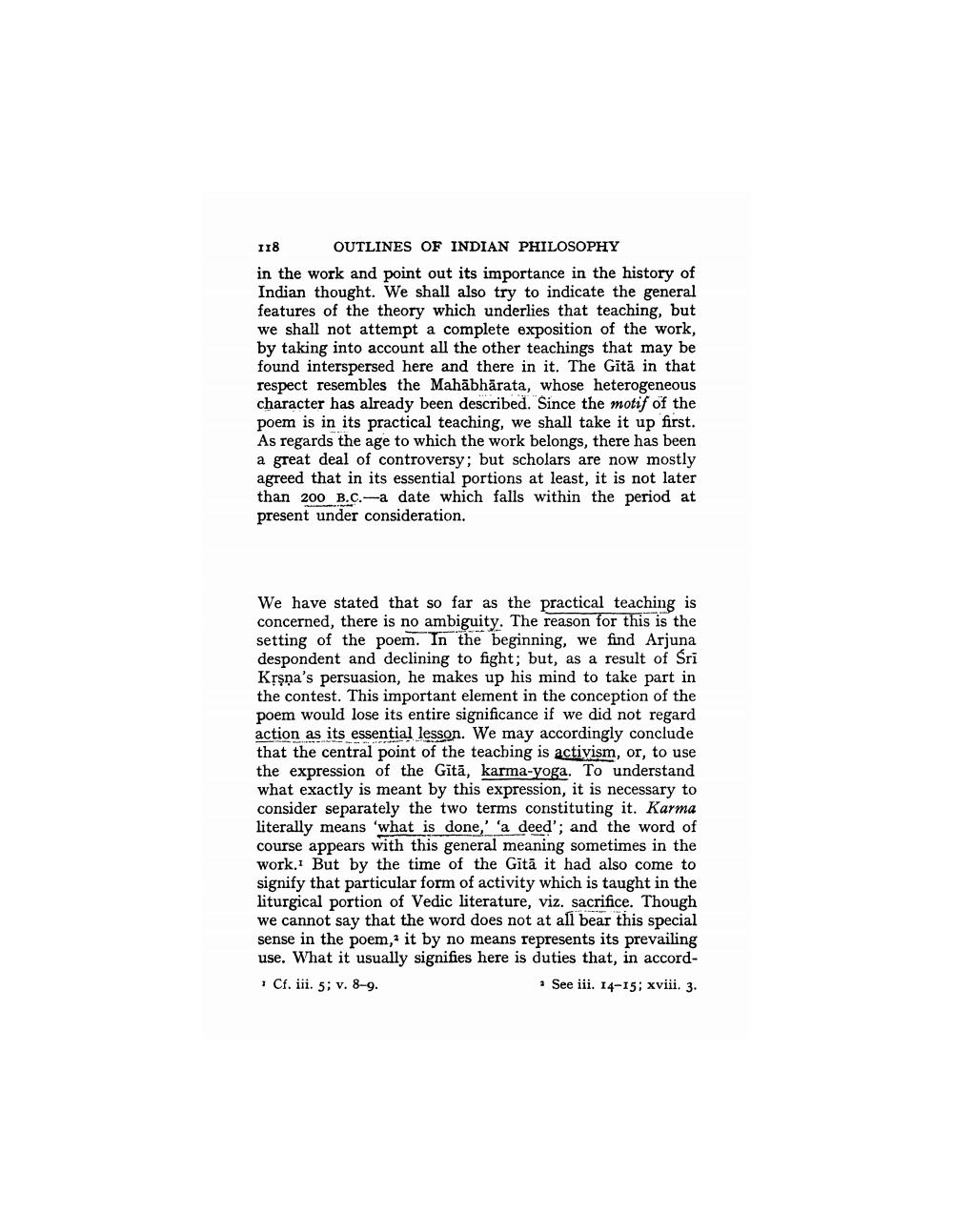________________
118 OUTLINES OF INDIAN PHILOSOPHY in the work and point out its importance in the history of Indian thought. We shall also try to indicate the general features of the theory which underlies that teaching, but we shall not attempt a complete exposition of the work, by taking into account all the other teachings that may be found interspersed here and there in it. The Gītā in that respect resembles the Mahābhārata, whose heterogeneous character has already been described. Since the motif of the poem is in its practical teaching, we shall take it up first. As regards the age to which the work belongs, there has been a great deal of controversy; but scholars are now mostly agreed that in its essential portions at least, it is not later than 200 B.C.--a date which falls within the period at present under consideration.
We have stated that so far as the practical teaching is concerned, there is no ambiguity. The reason for this is the setting of the poem. In the beginning, we find Arjuna despondent and declining to fight; but, as a result of Sri Krsna's persuasion, he makes up his mind to take part in the contest. This important element in the conception of the poem would lose its entire significance if we did not regard action as its essential lesson. We may accordingly conclude that the central point of the teaching is activism, or, to use the expression of the Gītā, karma-yoga. To understand what exactly is meant by this expression, it is necessary to consider separately the two terms constituting it. Karma literally means 'what is done,' 'a deed'; and the word of course appears with this general meaning sometimes in the work. But by the time of the Gitā it had also come to signify that particular form of activity which is taught in the liturgical portion of Vedic literature, viz. sacrifice. Though we cannot say that the word does not at all bear this special sense in the poem, it by no means represents its prevailing use. What it usually signifies here is duties that, in accordCf. iii. 5; v. 8-9.
· See iii. 14-15; xviii. 3.




